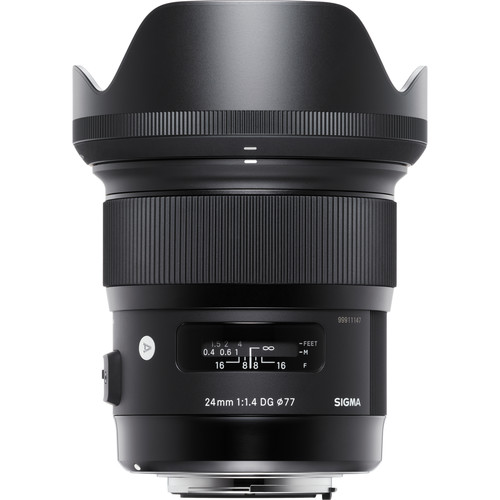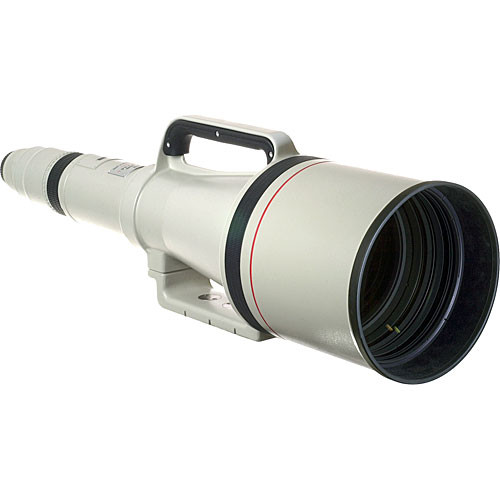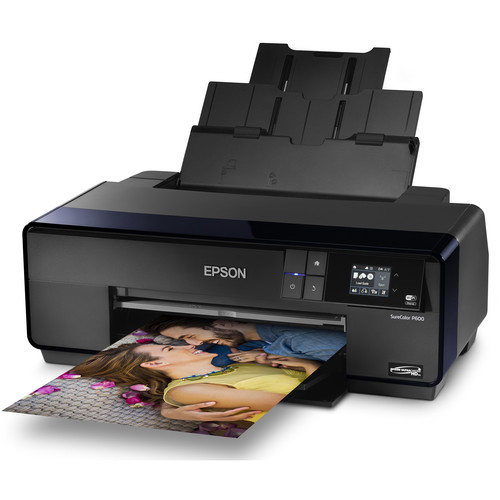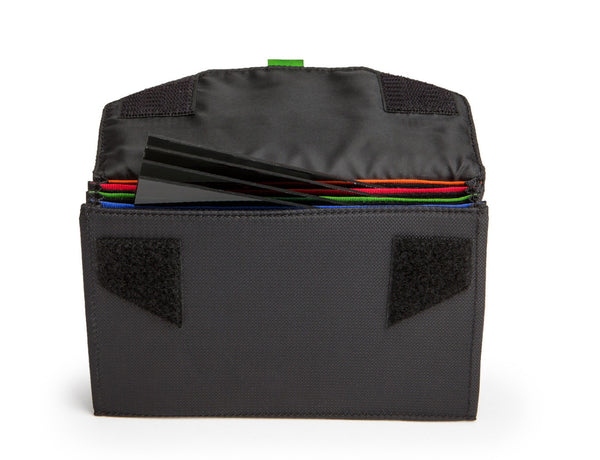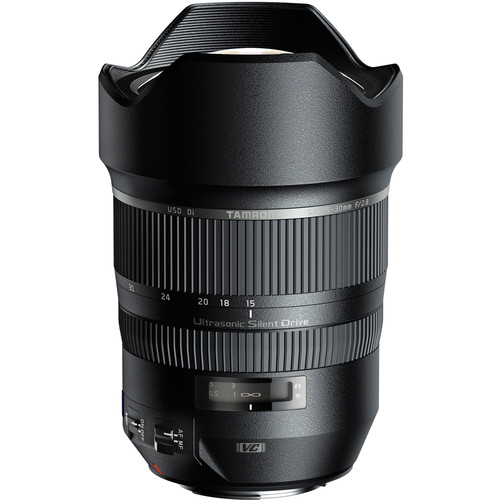
Tamron SP 15-30mm f/2.8 Di VC USD Lens
When I reviewed the Canon EF 11-24mm f/4L USM the image quality was so good that my wife shocked me by insisting that I buy it. After publishing my review I quickly started to hear from readers that I should also take a look at the Tamron SP 15-30mm f/2.8 Di VC USD Lens as some claimed it was just as good for a fraction of the price plus it offered vibration control. I had heard this kind of buzz before after I reviewed the Zeiss Otus 55mm when people told me that the SIGMA 50mm Art Series was nearly as good – and they were right. I like a good deal just as much as the next guy, so I figured there was nothing to lose by trying this out – best case scenario I could return my 11-24mm and save a bundle by getting this lens instead.
Would the rumors be true? Read on to find out!
Tamron Lens Review
Since I haven’t reviewed this lens yet, I’m going to start the first part of this article with my thoughts about the lens on its own merit. At the end of the article I finish up with a video and comparison photos between this and the Canon.
First Thoughts
Out of the box this is an impressive lens that feels like a $1000+ lens. It focus and stabilizes quietly while offering a solid overall feel. At a whopping 3.35 lbs it is pretty heavy compared to the Canon 16-35mm’s, but more inline with the Canon 11-24m which also weighs in at 3.7 lbs. Physically its closer to the 11-24mm as well.
As a result of the heft of this lens, I think some might find it too cumbersome to carry around. If you are the type that uses a 70-200mm f/2.8 and think its not too heavy, then this won’t be a concern. However, if you are someone who decided to get the 70-200mm f/4L IS (1.67lbs) then you’ll probably want to shy away from this lens as it weighs nearly twice as much!
The lens cap slides on and off of the built-in hood which works extremely well, but some may fear that lack of a locking mechanism. Personally, I liked it over the Canon 11-24mm locking design, so I considered this an advantage.
I’m not a fan of the firm resistance of the zoom and focus rings nor do I care for the feel of the switches for focus and VC, but some could consider this an advantage as Canon’s design is famous for accidental movements. As a result, I’d call them functionally effective but not especially satisfying to use (unlike the dreamy feel of the Zeiss Otus focus ring).
About Vibration Control
While adding vibration control is certainly handy for free hand use, the fact that it isn’t tripod aware means that some users will inevitably get blurry shots on long exposures when they forget to turn it off. As a result, I consider it both a blessing and a curse. Since I’m used to not having stabilization on wide angles due to the slower shutter speeds they enjoy (via 1/<focal length> formula), it would have been nice to see Tamron match other newer stabilizations systems that are tripod aware. This technology exist, so I am disappointed they weren’t able to apply it here.
Canon offers IS on the 16-35mm f/4L IS but not the new 11-24mm or the legacy 16-35mm f/2.8L IS. They do however have tripod awareness built into their newest generation IS system which the new 16-35mm f/4L IS uses.
In real world use I never saw a great benefit of the VC system, so I consider this more of a checkbox feature than one that wow’d me. If this were a longer lens then it would certainly make more of a difference to me, but I never had an occasion where I needed it.
Bookshelf Shots

f/5.6 @ 30mm for 15 sec at ISO 100
To my eyes, the sharpest this lens gets is at f/5.6 @ 30mm. The resulting image is razor sharp in the center (click the image above for a full-size original) with softness as you expand outwards. I’d consider this an above average sharpness for where it is sharp, so Nikon buyers will probably find that it is a fair competitor to the Nikon AF-S NIKKOR 16-35mm f/4G ED VR Lens. I discuss how it compares to Canon’s offerings later in this article, but overall I found that it could do a better on the edges than it does.
Click here to see my full set of Bookshelf shots and view the captions to know which is which.
Real World Shots
As my readers have come to expect, here’s my 100% unedited real world images with all their flaws and incredible detail. These are all straight out of the camera JPEG’s taken from a Canon 5D Mark III or Canon 1D X with no cropping, rotating, etc - nothing.
All images are copyright ® Ron Martinsen – ALL RIGHTS RESERVED. You may click to view the in-camera originals, but you must delete them when you are done reviewing them. You may not edit, print, copy, upload or otherwise use or modify these images without written consent – yes, even the ugly ones!
To see more photos, visit
http://photos.ronmartblog.com/lens/tamron/15-30mm.

f/5.6 @ 15mm for 1/100 sec at ISO 500
When I saw this shot initially, I was was like “whoa, that’s impressive”!
Make no mistake, this is a decent lens!

f/5.6 @ 15mm for 1/100 sec at ISO 640
The bokeh felt a bit odd to me at wide open, but the sharpness at the focus point was impressive!

f/22 @ 30mm for 1/60 sec at ISO 320
For fun I did this shot at f/22 to check out the starburst effect with this lens vs f/16 below

f/16 @ 30mm for 1/30 sec at ISO 100
I was pretty satisfied with this lens performance – aside from constant ghosting problems

f/4 @ 30mm for 1/125 sec at ISO 100
While sharpness is good, I’d classify the bokeh quality as average for a third party lens

f/5.6 @ 19mm for 1/100 sec at ISO 640
This lens is sharpest in the center but it still does okay with edge sharpness
in real world scenarios (vs pixel peeping where it suffers)

f/4 @ 15mm for 1/800 sec at ISO 100
If you are mindful of the sun (which is right behind Kai’s head), ghosting and flare can be avoided
and good results can be quite easily achieved.

f/4 @ 15mm for 1/1000 sec at ISO 100
While I wouldn’t say this is a fast focusing lens, it was acceptable for a wide angle based on my subjective testing in the park with an active 5 year old both here and below

f/4 @ 15mm for 1/640 sec at ISO 100
The 5D Mark III was able do its job thanks to acceptable AF speed for a wide angle lens

f/4 @ 15mm for 1/1000 sec at ISO 100
Wide angles are fun for different perspectives that retain a view of the environment while still capturing your subject. This makes them lots of fun with kids!
Notice the unusual ghosting on the bottom left quadrant above the grass by the people

f/4 @ 15mm for 1/800 sec at ISO 100
The sharpness of the hair was insane here, but even more fun is the big head little body effect that is so much fun with super wide angles.
Edge distortion is pretty extreme though which led to stretched out long hands.

f/4 @ 15mm for 1/800 sec at ISO 100
It never fails, whenever I shoot 15mm I always end up with at least one shot of my shoe in the frame. I included it here just for fun to remind readers – keep an eye on your shoes when you go super wide!

f/4 @ 15mm for 1/640 sec at ISO 100
Many of my outdoor shots were marred by excessive ghosting spots like these. Sometimes they can be cool, but most often they were were just annoying like the one here that led to a ghosting booger on my subject.

f/4 @ 20mm for 1/500 sec at ISO 100
Once you get mindful of this problem you can use it to your advantage to get ghost spots that draw attention to your subject as I did here.

f/4 @ 15mm for 1/1250 sec at ISO 100
If you can avoid the ghosting, you can do this to your friends who bought much more expensive lenses in this range. It’s definitely a crazy sharp lens at the center that’s a lot of fun to use.
To see more photos, visit http://photos.ronmartblog.com/lens/tamron/15-30mm.
DISCLAIMER: Before people decided to post flame mail comments about why I didn’t compare this lens to the Canon 16-35mm’s, I’d like to officially state that this review was done at the request of multiple readers who asked me how the new Tamron 15-30mm compared to the new Canon 11-24mm. I answer this question below, and for completeness I also include some info about the Canon 16-35mm’s. The reason why I did Canon instead of Nikon is simply because that’s what I shoot with and the timing of the release of these new lenses.
For the images below I took the two sharpest images of the day which unfortunately ended up being composed slightly differently and used a different focal length. However, the casual observer might feel that the Tamron is “just as good” as the 11-24mm by doing a comparison of this type. This I think is what is happening on the web by those who feel this lens is competitive with the 11-24mm:

Tamron f/5.6 @ 15mm for 1/60 sec at ISO 100
The Tamron did a fantastic job at capturing an image with sharp detail and a pleasant bokeh

Canon f/5.6 @ 19mm for 1/60 sec at ISO 100
The Canon offers a much more pleasant bokeh (although the intensity is due to subject distance and focal length), but where it has the greatest advantage is in sharpness of the details on the flower
Flare Comparison
As mentioned previously this lens has a habit of ghosting, but it’s also gets a bit washed out with flare too. I wanted to have a shot compared the Tamron against the SWC anti-flare technology used in the Canon lens. Notice how the Tamron image below feels a bit washed out and lacking midtone contrast?

Tamron f/4 @ 30mm for 1/125 sec
Under identical conditions, the Canon does a better job with flare and avoids the washed out look as you can see here:

Canon f/4 @ 24mm for 1/125 sec
Click here to watch a video that explains how Canon’s Subwavelength Structure Coating (SWC) lens coating technology works.
.
Bookshelf Sharpness Comparison

24mm @ f/4: Canon 11-24mm vs Tamron 15-30mm
As expected, the $1800 premium for the 11-24mm clearly shows as the newest Canon is significantly sharper all the way out to the edges even at it’s base aperture of f/4 (vs the 15-30mm’s 2nd sharpest aperture that’s 1 stop up for wide open). The Tamron does a respectable job at the center but it’s only advantage over the Canon seems to be slightly brighter and warmer images in-camera.
Physical Size Comparison
In this video I discuss the physical size Canon 16-35mm to the Canon 11-24mm and Tamron 15-30mm:
The video above was shot with a Nikon D7200 using the kit lens featured in my review.
Canon 16-35mm Comparisons
The best way to do your own pixel peeping is to visit the comparison gallery and download the photos so you can do your own comparisons in Lightroom. Here’s how from my gallery:
Step 1 – Click select photos:

Step 2 – Click Select All:

Step 3 – Click download:

Click Download to get a local copy of the originals
This will give you a zip file of images you can use to compare to your hearts content. When done, please delete them from your computer. Images are included for both Canon 16-35mm’s (the f/2.8 & f/4) as well as the Canon 11-24mm to be compared against the Tamron 15-30mm.

Lightroom Metadata Filtering in Library Grid Mode
The net result from pixel peeping is that you’ll notice that the sharpness ranking goes like this:
- Canon 11-24
- Canon 16-35mm f/4L IS
- Tamron 15-30mm
- Canon 16-35mm f/2.8 II
My eyes notice a more pleasing bokeh from the Canon’s with slightly more edge distortion from the Tamron.
Conclusion
At the end of the day, my take on this lens is that it offers nice center frame sharpness at the expense of a harsh sharpness fall off with extreme distortion at the edges. While some fall off and distortion is characteristic of this class of lens, I found it to be less desirable than what I’m accustomed to as a long-time user of the the Canon 16-35mm f/2.8L II. However, this is a much sharper lens than my old Canon 16-35mm f/2.8L II, so its impossible to justify the extra $400 for the Canon over this lens. As a result, I have to say this lens is a great value for what you get. It’s basically in the same league as the Canon 16-35mm f/4L IS for a only $100 with the added benefit of being a constant f/2.8.
The ghosting, flare, and mediocre bokeh are certainly things to be mindful of, but when used in a way that works around or embraces these limitations I think this lens is sure to please. As a result, if you are already a fan of Tamron lenses then I’d say go for it. If not, then those who are loyal to first party OEM lenses (like Canon and Nikon) might find themselves slightly disappointed.
Where to order
Click here to learn more or order the B&H web site.
Other articles you may enjoy
If you enjoyed this article, you may also enjoy these:
Disclosure
If you make a purchase using links found in this article, I may make a commission. It doesn’t cost you a penny more, but it does help to support future articles like this.
NOTE: This site requires cookies and uses affiliate linking to sites that use cookies.
. Either way, your support is greatly appreciated!
This blog is intended for freelance writing and sharing of opinions and is not a representative of any of the companies whose links are provided on this site.
The opinions provided are of Ron Martinsen alone and do not reflect the view of any other entity
